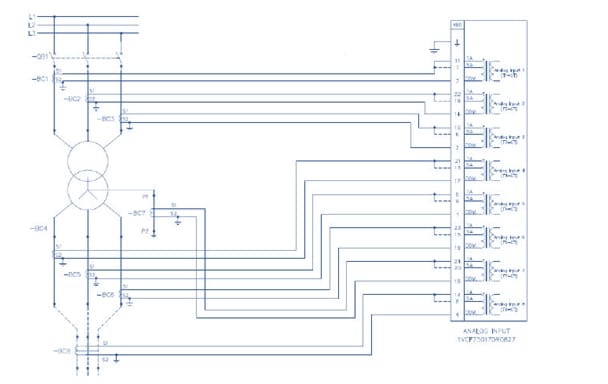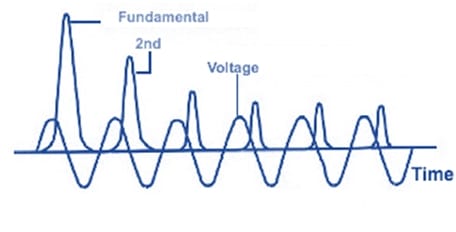Introduction
Transformer differential protection is a protection scheme based on current comparison, it is usually employed to protect two-sided components such as the transformer windings from internal short-circuit currents.
Basically, the differential protection is based on the idea of comparing the currents into the winding of a transformer with the currents out of the winding, if the currents are balanced then the difference between them is zero and there is no fault on the winding.
In case an internal short-circuit current or an earth-fault current exists, then the incoming current will be much higher than the outgoing current and the comparison will result into a significant difference, which can be used to generate a trip signal to disconnect the switching elements.
The differential protection scheme is usually set to send a trip signal to the switching elements when the differential current id exceeds 20-25% of the rated current in.
How does the differential current operate with the transformer inrush current?
In order to avoid unnecessary tripping due to high inrush currents, the transformer differential protection employs the harmonic restraint feature. The idea is simple, the differential current logic is accompanied by this feature to detect the 2nd harmonic current, which is a main component associated with inrush current.
Furthermore, advanced protection schemes utilize the 4th harmonic in addition to the second harmonic to decrease the probability of operation in case of transformer inrush current.
When the 2nd harmonic detected increases beyond the defined setting, the differential protection is blocked (restrained) momentarily to avoid incorrect tripping during the startup period, otherwise the differential protection will keep disconnecting the switching elements in every startup event.
What is significance of current transformers matching in differential protection?
Current transformers or current sensors are used to reflect the large values of the primary circuit on the secondary circuit for comparison.
The locations where the current sensors or transformers are installed define the protection zone of the differential protection scheme. In case current transformers are installed and unmatched, then the difference between the currents will not be reflected accurately in the secondary circuit for comparison and the measured difference will not be correct, thereby indicating a false flag.
The current transformers are connected in a delta form, when the winding of the protected transformer is connected in a star form and vice versa.
The addition of current transformers to the differential circuit makes the differential protection scheme more complex in terms of wiring and configurations.
Conclusion
The differential protection scheme is a quite reliable method used to protect transformers from internal faults, especially when combined with the harmonic restraint feature, which prevents unnecessary tripping due to inrush currents.
However, the differential protection must be combined with other protection schemes to completely protect the transformer and the reliability it provides comes at the expense of additional wiring by adding auxiliary transformers or sensors.


I read your post very helpful to me because i am a Engineer.
Hey,
Thanks for sharing such helpful content. I have added new kit in my knowledge dictionary.
Though you explained about Differntial Relay, could you please help us to know what your next topic?
I am eager to know Slope of Differential Relay
Thank you